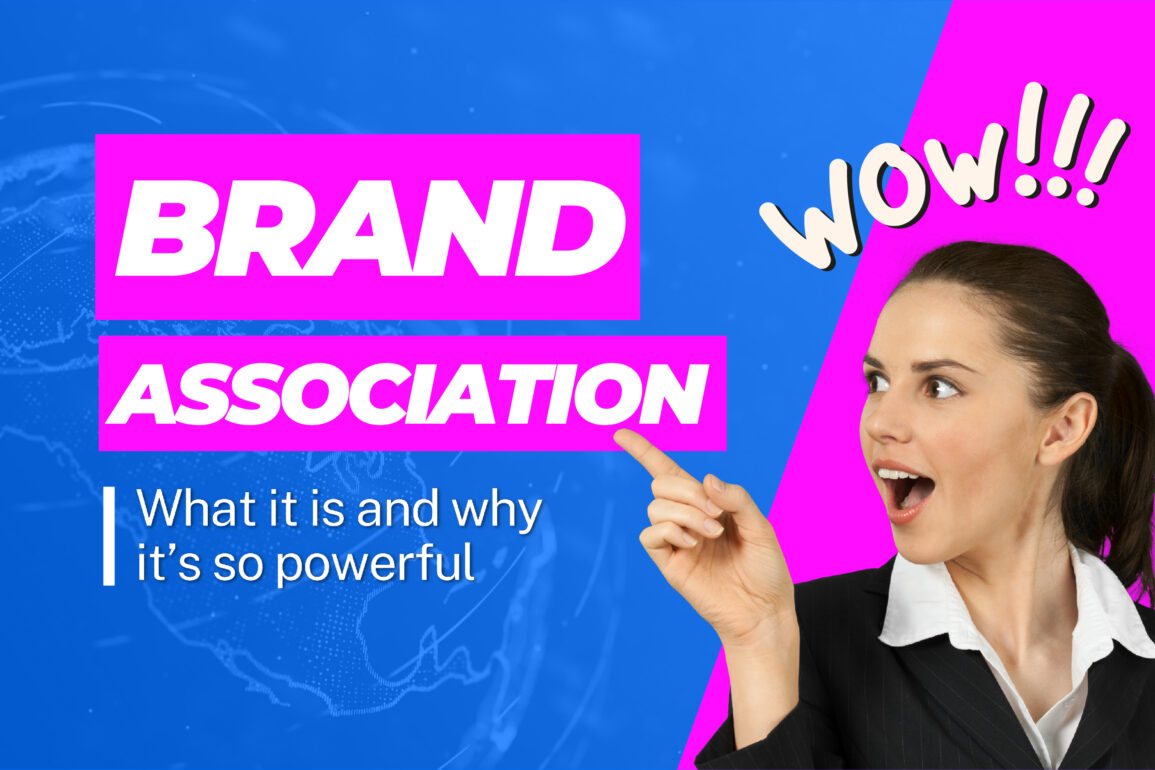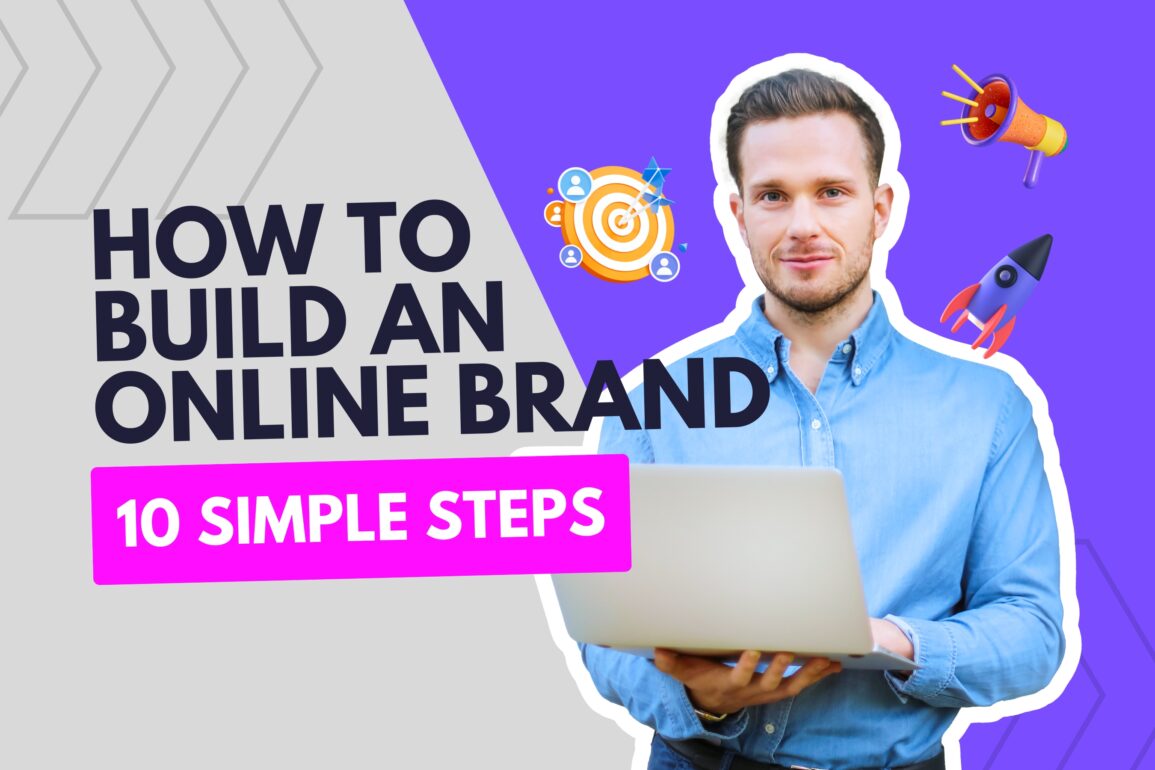Your guide to brand association: Definition and importance

Positive brand association is the key to building a robust, successful company. When customers purchase products and services, they don’t just consider pricing and features. They’re driven to decisions by what they think and feel about a brand.
In fact, studies show that 89% of customers are more loyal to organizations who they believe share their priorities and values. A positive brand association means your target audience subconsciously makes a mental connection between your brand logo or name, and other positive things.
Potential customers might link your business to ideas of sustainability or ethical practices, excellent customer service, or a commitment to innovation. Just think of how many consumers align the Nike brand with concepts like achievement, inclusion, and diversity.
The challenge is that cultivating the right brand association is a complex process. It requires companies to deliver consistent experiences through every touchpoint with their customers, to form the basis for long lasting relationships.
The good news? You can start developing positive brand associations today.
Here’s everything you need to know to elevate your brand.

What is brand association: Brand association definition
Let’s start with the basics; what is brand association? Brand association is the mental connection customers make between your brand and a concept, interest, activity, experience, or emotion. It’s essentially the “impression” or “perception” customers have of your brand.
The basis of brand association is rooted in science and psychology. Back in 1949, Donald Hebb theorized that one thought in the human brain would be more likely to prompt another accompanying thought, when they were recalled together consistently.
For instance, when we think “ice cream”, we think “cold”, “delicious”, “refreshing”, or “sweet”. Similarly, when we think of certain people, or brands, other concepts, images, and feelings automatically jump to mind. These associations are formed over time.
The more we witness examples of a company delivering excellent customer experiences, working with celebrities to demonstrate authority, or showcasing innovation, the more we connect the two concepts.
Eventually, these associations either improve brand loyalty and brand equity, or they can do the opposite. If your customers constantly see evidence that you put their needs first, or behave in an ethical way, they’re more likely to develop a positive mental image of your brand.
Alternatively, if your consumers constantly see bad publicity connecting your brand to scandals, and unethical practices, or they’re always unsatisfied with your service or products, negative associations form.
Unfortunately, while it takes time and effort to build positive brand association, a single mistake can be enough to undo all of your hard work. Just look at how Elon Musk went from an internet superhero to a villain for many consumers almost overnight, due to a few bad press releases.

The various types of brand association
Brand associations don’t just fall into two categories. Alongside negative brand association and positive brand association, there are various ways to cement your company’s image in the minds of consumers.
Some of the most common types of brand associations are built around:
1. Brand attributes
Perhaps the most common way people build associations with brands, is through the recognition of their specific brand attributes, or unique selling points. It’s not just what companies sell that influence these associations, but also how they position themselves in the market.
For instance, when we think of Coca-Cola, most people don’t just think of refreshment, they also think of the company’s commitment to creating joyful community experiences, the brand’s connection to Christmas (with the color red), and Coca-Cola’s jingle “Always the real thing”.
2. Brand benefits
Positive brand association can also stem from the specific benefits a brand offers to its customers. These can include functional benefits from a product or service, such as the time saving you get from using an automated software like QuickBooks.
They can also include more emotional benefits. For instance, consumers may see the ability to show their support for animal rights by buying from Lush as a benefit. Alternatively, companies may position their commitment to exceptional customer service as a benefit.
3. Brand personality
Consumers want to buy from companies that they feel are “similar” to them. We’re more likely to feel emotionally connected to companies who share specific personality attributes. For example, BrewDog appeals to younger, rebellious consumers with it’s playful messaging and marketing campaigns.
The personality attributes that lead to strong brand association can also stem from the partnerships your company has with other people. Burberry improved its connection to younger, modern audiences by working with Emma Watson.
4. Brand values
Just as customers want companies to share their personality attributes, they also want them to be committed to the same values, such as sustainability, ethics, or social responsibility.
Showcasing strong brand values in every marketing campaign and message is a great way to form deeper connections with your target audience.
Like brand personality, your brand values can be heightened by the support of a celebrity or influencer who already has a connection with your audience. For instance, Tiger Woods was associated with excellence and ambition, making him a strong partner for Nike.
5. Character associations
While the image of a celebrity can have a strong impact on brand association, they’re not the only characters that influence what people think and feel about your brand. Founders can also have a lasting impact on brand associations.
Steve Jobs, for instance, was associated with innovation, which made Apple appear as a more innovative company. Even fictional characters and mascots, like Mickey Mouse or Colonel Sanders influence how people envision a brand, giving companies human qualities.

Brand association examples
Brand association can be a powerful tool for business growth. Once you’ve created a specific brand image for your company, based on your actions, visual identity, and other factors, you gain an unfair advantage over your competition.
When association’s are formed in people’s mind, it only takes a second to trigger connections that increase your chances of sales and customer loyalty. Just look at how you feel when you see the Nike Swoosh, hear the McDonald’s jingle, or hear the words “Just Do It”.
A strong association forms deep within the minds of your consumers, and grows stronger based on your commitment to brand consistency.
Positive brand association examples
As mentioned above, examples of brand associations can be both positive and negative. The goal of brand strategists and business leaders is to ensure they’re constantly taking steps to establish and strengthen positive associations, and eliminate negative connections.
Let’s take a look at some great examples:

Coca-Cola
We mentioned them above, but Coca-Cola is one of the best examples of a brand with exceptional brand association. Over the decades, the company has crafted a place for itself in its consumers’ minds not just as a beverage vendor, but as a purveyor of joy.
Everything the company does, from producing jingles, to using bright and vibrant colors like red in its visual identity, heighten this connection. The marketing campaigns produced by Coca-Cola are all about community and positive experiences.
Even the company’s decision to align itself with Christmas (turning Santa Claus red) aligns the organization with one of the happiest times of the year.

Patagonia
Patagonia is one of the world’s most successful clothing brands, because of powerful brand associations. The company doesn’t just sell high-quality clothing, specially produced for a target market of dedicated explorers, they commit to protecting the planet.
Patagonia has developed a positive image in its customer’s mind as a champion for sustainability, eco-friendly practices, and ethics. It builds on this image constantly, with new corporate responsibility initiatives, and marketing messages that raise awareness about sustainability.
The first thing most consumers think when they see Patagonia’s logo, is that they’re buying from a brand that cares about the environment.

Apple
Apple is far from the only tech innovator in the world today, and it’s certainly not the cheapest vendor of smartphones and computing goods. However, it’s managed to build a huge community of dedicated consumers, thanks to positive brand association.
The Apple logo reminds us of nourishment and ingenuity, through it’s connection to the biblical story of Adam and Eve, and its link to the tale of Isaac Newton. Apple’s approach to design makes us think of modernity, and sophistication.
Even the way the company takes its product to market, with amazing press events, and the sleek design of the Apple store elevates its position as a “leader” in the market.
Negative brand association examples
Unfortunately, while it takes time to form positive mental connections between a brand and emotions or ideas, it often takes a lot less for negative association to forms. Many small businesses and larger companies alike have failed as a result of just one scandal or instance of bad publicity.
Notably, however, it is possible to reframe negative associations, with the right crisis management plan, and a strategy for “repositioning”. Let’s look at some well-known negative brand association examples from throughout the years.

Meta (Facebook)
For a long time, Facebook was one of the most popular social media platforms, and one of the biggest brands in the world. It was seen as an innovator, offering people new ways to connect, share their lives with loved ones, and discover entertainment.
Unfortunately, the mental association consumers had with the brand shifted after the Cambridge Analytica scandal revealed the business was using personal information unethically. The impact on consumers was so significant, Facebook had to change its entire identity.
It rebranded as “Meta”, shifting its focus away from “just social media”, to become a more comprehensive technology company, and reconnect with a new audience.

British Petroleum
British Petroleum, or BP, is another major business that suffered as a result of negative associations after a major scandal several years ago. The BP oil spill of 2010 was an industrial disaster, leading to a significant loss of life, and incredible damage to the environment.
While many companies make mistakes, and can be forgiven by their consumers, BP struggled to reconnect with its audience as they were found to have cut corners when ensuring safety. This cost BP billions in damages, lost customers, and suits.
Since then, BP, like Facebook, has been forced to revitalize its brand, choosing a new logo, and updating its approach to environmental friendliness.

Elon Musk
It’s not just businesses that can be made or broken by positive or negative brand associations. Brand association also extends to the world of personal branding. For years, Elon Musk was seen as an environmental champion and innovator, producing some of the world’s best electric cars.
He amassed a cult-like fan base for his playful personality, his out of the box thinking, and his approach to leadership. However, in recent years, consumer sentiment towards Musk has changed, for a few reasons.
His approach to transforming Twitter showed customers that he didn’t have their best interests at heart. Plus, stories about his conversations with employees and work ethic have revealed Musk to be less “relatable” in the eyes of his audience.

What is a brand association map?
If you’ve stumbled across the term “brand association” before, you may also be familiar with the concept of a brand association map. This is one of the tools business leaders and brand strategy experts can use to evaluate the connections consumers can build with their brand.
A brand association map essentially outlines the various attributes that consumers could give your brand, based on your actions, your brand values, and what they hear or read about you.
Creating a brand association map involves taking a closer look at the words and concepts people associate with your company, often through activities like social listening, and consumer interviews.
The map shows how closely specific attributes are connected to your brand, and the opportunities and risks you should be aware of when developing new products, marketing campaigns and more.
In a brand association map for Nike, terms like “shoes” and “athlete” might be close to the center of the map. Around those terms, you might have terms like “comfort”, “inclusivity”, or “fun”. The map may even include competitors and the attributes associated with them.
For instance, Nike might have “Adidas” as a major competitor, surrounded by terms like “affordability”, or “durability”.
Maps can be helpful for guiding your marketing strategies, particularly if you want to ensure that consumers are linking your company to specific ideas. For instance, if Nike wanted to out-perform Adidas by positioning itself as a more affordable option, it might launch sale promotions.

How to build positive brand associations
Brand association is important because it defines how people see and feel about your brand. Whether you actively pursue positive brand associations or not, consumers will ultimately link your company to different concepts based on what they see and hear about you.
At their best, brand associations help to differentiate you from the competition, paving the way for brand loyalty. They ensure you can build deep emotional connections with your consumers, that prompt them to choose your products or services over the competition.
At their worst, brand associations can spark the death of your business, convincing consumers to boycott your brand, and drive new consumers away.
Here are just some of the ways you can start building positive brand associations.
Step 1: Examine your target audience
The first step in building strong associations between your company and positive attributes, is understanding your customers. If you don’t know which attributes your consumers value in a business, it’s difficult to position your company effectively.
Consider your ideal target audience carefully, creating customer personas that outline everything from demographic attributes, to behavioral characteristics and psychographics. Ask yourself which brand attributes matter to your consumers (such as affordability or innovation).
What convinces loyal customers to stick with competing brands, and what drives them away? How do your consumers currently see your brand, and what about your business do they like and dislike?
You can build on your research with customer surveys, social listening tools, and even competitor analysis, to help benchmark your brand associations against the competition.
Step 2: Build a robust branding strategy
Your branding strategy is the key to positive brand associations. Every aspect of your brand, from your appearance, to your messaging strategy, has an impact on the minds of your customers.
Start by developing a strong identity. Think about your brand mission and vision, the values you’re going to convey to your audience, and the way you’re going to position yourself in the market. Next, look at your tone of voice and brand personality.
What kind of words do you use in your marketing messages? How do you communicate with potential customers and loyal fans. Are you playful and fun, or sophisticated and professional? What key benefits do you draw attention to with your messaging?
Finally, consider the visual elements of your brand. What does your logo say about your business? How are you using color psychology to connect with consumers in the right way?
Step 3: Consider all customer touchpoints
Once you have a clear view of your target audience, and a strong branding strategy, think about how you interact with people in your niche. Every touchpoint you have with your customers is an opportunity to leave a positive impression and convey a distinct identity.
Online, you’ll have social media channels, your website, email marketing campaigns, and even business review sites, all contributing to brand association. Offline, you’ll have phone conversations, in-person meetings, event presentations, and in-store interactions.
To ensure you’re building more positive associations with your audience, train your employees on your brand voice, image, and the core values you want to convey. Create guidelines for marketing and customer service strategies, that highlight the important aspects of your brand.
Ensuring you deliver a consistent experience through every touchpoint will help you to build strong connections with your audience faster.
Step 4: Consider partnerships carefully
As mentioned above, it’s not just your team or your founder that has an influence on your brand’s equity and identity. As human beings, we often judge others by the company they keep, and the people they associate with.
Companies like Nike, who want to be associated with accomplishment and ambition, work with thought leaders in the sporting and athletic market. Businesses like Lush who want to be seen as ethically responsible, connect with relevant nonprofit organizations.
The celebrities, influencers, and other partners you work with will shape how people view you. With that in mind, make sure you carefully research each person or company you plan on working with, to ensure their values align with your own.
Step 5: Carefully monitor brand associations
Crucially, the way people think about your company can change rapidly from one day to the next. As we saw in the examples of negative brand associations above, a bad messaging strategy, or poor publicity can instantly turn your brand image upside down.
This means you need to be proactive about identifying and neutralizing threats to your brand. On a small scale, this could be responding to negative reviews online. On a larger scale, this could mean issuing press statements when negative news is circulating around your company.
Ultimately, every organization should have a crisis management plan to ensure they can bounce back from potential risks to their reputation. When a crisis happens, it’s crucial to jump into action quickly, to reduce the risk of long-term backlash.
Devise a plan early on for how you’ll respond to any negative associations that start to develop around your company, so you can repair crucial relationships.
The power of brand association
Brand association is more important to your company than you might think. While positive associations can pave the way for rapid business growth and high profits, negative associations can destroy your company – sometimes almost instantly.
Taking a proactive approach to building positive associations for your brand, improving your reputation with customers, and forming emotional relationships is essential. The more time you commit to your brand association strategy, the more durable and resilient your business will be.
If you need help building positive associations for your brand, reach out to Fabrik today, for help devising an identity and strategy that resonates with your target audience.
Fabrik: A branding agency for our times.
















